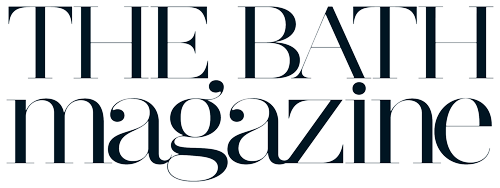Cover image shows Sophie Cookson in The Trial of Christine Keeler (2019) Photo: Ben Blackall/Ecosse Films/BBC
Creating an authentic and believable world for a film or TV drama involves many creative contributors. One of those is Bath-based Pam Downe who has created costumes for actors such as David Tennant, Gemma Arterton, Dervla Kirwan and Andy Garcia. Pam shares some of her visionary world with us…
I have been designing costumes for many years, moving between TV and film and from period to contemporary projects, I have also worked on fantasy and more recently futuristic projects. I have been lucky enough to work in many countries including Romania, the Czech Republic, Morocco and the USA. Some of the more recent projects were Mr Malcom’s List, a film set in the Recency period which we shot in Dublin during the pandemic, Funny Woman a 1960s’ TV drama which filmed in Liverpool and starred Gemma Arterton. I am currently working on the new Doctor Who series and, having finished the three specials which starred David Tennant, we have now moved on to our new Doctor, Ncuti Gatwa.

My training was an Expressive Arts degree at Brighton Polytechnic (it doesn’t exist now), which combined fine art with a performance option where I chose dance. I always had an interest in the construction of clothes and taught myself how to sew. I also was attracted to the differences of cut in period costume, so I ended up working for a short while in a costume house called Clothes Peg in London. However my big break was when I randomly contacted Sandy Powell (now a multi Oscar winner) who asked if I could sew and invited me to join her team and from there I learnt a lot about the film industry. I was lucky!
I had to fly to LA with full made-up costumes and fit [Andy Garcia for Modigliani] with my fingers crossed, hoping it would work”
For every project I work on I am given a certain amount of prep time. This differs from job to job, from six weeks up to 12 weeks. Often a period piece will need a longer prep than a contemporary one. Prep time is for researching, for meetings with other creatives such as the director, production designer and the make-up designer so everyone is collaborating on the look as a whole, and for fittings.
Where I source my costumes is entirely dependent on the project. If I am on a period piece then most of my principles wear bespoke outfits. This means you can control the cut and choose more accurately the colours you want to use, thereby making sure they suit the actor and will work well in the sets. However for most smaller parts I often hire costumes, which will sometimes be altered to fit and be re-trimmed to work with the aesthetic. With contemporary pieces I will buy from current collections, but also might make some pieces too.

The best briefs I get are those that give a clear idea of the characters, but allow you to interpret that visually. When I am ready to share my ideas I create mood boards for each character, which I send to key people such as the director, the producer and the show runner (the highest exec.). After feedback I adjust the images or not, depending on the response. After this all creatives go into a ‘tone meeting’ and share their images. Any sketches are done after this process.
For researching a period piece I will often go to the V&A and the National Portrait Gallery in London and the Fashion Museum in Bath. I also look at paintings and for more recent periods find photographic images in books and on the internet. Sometimes I read texts about costume from the period as this can give some insights. For contemporary I look for images on the internet and also look at new fashion collections.
Period tends to be my preference over contemporary, as I like the detail you have to go into with cut, fabrics, printing and trimming and the fact that you have licence to emerge yourself in that world. However it does depend also on the script – for some contemporary pieces you can stylise the look which can be fun.
I always meet my actors at some point in order to fit them in their outfits, however the timing of this can vary. For instance when I had to fit Andy Garcia for Modigliani (2003) I had so little time before he was to shoot that we had to make everything for him from measurements we managed to get from his previous show and I had to fly to LA with fully made-up costumes and fit him with my fingers crossed, hoping it would work and he would like it. This was my only fitting as he was flying to the UK four days later to shoot. (It did work!) In fact he was the actor who I was the most scared of meeting, but I was fairly new in my career then.
I think my most challenging job is the new Doctor Who series, which is very ambitious in its writing and visuals. There is the pressure of dressing the Doctor himself as the show has many fans with opinions so I am mindful of the legacy. In addition this Doctor has several costume changes, many of which are distinct, which is different from previous Doctor incarnations. It is also a show where each episode has its own tone so it is like making a new film each time. Added to that it involves complicated stunts and lots of visual effects which impact the costumes.

In the new series of Doctor Who there are so many more characters and fantastical creatures apart from the Doctor packed into each episode. One of the more interesting episodes for me was Special 3 (which aired in December 2023), for which I had to design a new costume for David Tennant but also the costumes for a character called the Toy Maker, played by Neil Patrick Harris, We made four bespoke costumes for him, a 1930s’ evening tails with a top hat, a 1920s’ toy shopkeeper, a full marching band outfit and a 1930s’ pilot outfit. Some of these looks were referred to in the script (such as the tails) but for the others I just interpreted what was written on the page.
One of my most memorable projects is The Trial of Christine Keeler. This is because the story about the Profumo affair is so fascinating and I loved doing the research on the different worlds Keeler inhabited, from the fancy world of Profumo to the edgy world of Notting Hill where she also hung out. It was shot in Bristol and Bath, so it was local for me which was a huge bonus. By the same token I enjoyed working on The Spanish Princess 2, a Tudor TV drama, also shot locally.
One of the shows I am most proud of is Interlude in Prague, an 18th-century film about Mozart’s time in Prague where he created Don Giovanni. We shot in Prague and I had costumes made in London. There was a notable scene where Mozart attends a masked ball filled with monied dignitaries – this allowed me to create fantasy costumes where I had to try and imagine what these 18th-century people might wear as fancy dress!


